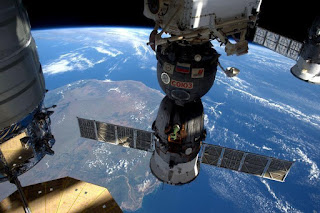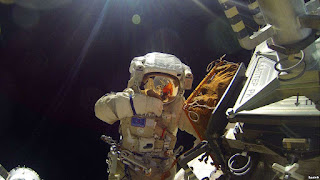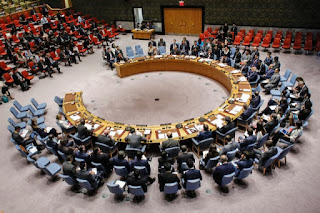Extraterrestrial Microbes on the International Space Station
Extraterrestrial
Microbes on the International Space Station
By E. Stanley Ukeni
In what may sound like tabloid
news story, the Russian Space Agency, Roscosmos, announced, in a press release,
that it has evidence that suggests that comet dust that have accumulated on the
surface of the International Space Station (ISS) does contain traces of alien
microorganisms.
Yes, you heard it right, the
Russians think that extraterrestrial bugs are latching into the exterior of
ISS—and they are currently testing samples of these bugs and sequencing their
genes. If this proves true…its really scary stuff, considering the history of
the world’s superpowers in working to weaponizeing exotic pathogenic microbes.
The International Space Station
in a collaborative scientific and exploratory project between the space
agencies of several Nations—including the United States, Europe, Russia, Canada
and Japan. The space station was first launched into orbit in 1998.
It would appear that Russian
Cosmonauts have been gathering dust samples from the surface of the
International Space Station, during space walks, since 2010—for unspecified
secret scientific experiments back in Russia, code names, “TEST”. We can only
hope that these experiments are for peaceful purposes—aimed at advancing human
scientific knowledge.
Excepts of the the Roscosmos
press release, which was reported by Russian State news agency, TASS, reads
thus; ‘The micrometeorites and comet dust that settle on the ISS surface may
contain biogenic substances of extra-terrestrial origin in its natural form….’
The press release also states,
‘The ISS surface is possibly a unique and easily available collector and keeper
of comet substance and, possibly, of biomaterial of extraterrestrial origin.’
I must say that it’s quite intriguing
that living organisms, whatever their origins may be, can survive in the void
of space—without oxygen or nourishment. I am sure scientists would be
interested in finding out how these organisms were able to achieve this
seemingly unnatural feat.
Confirming the assertion of the
Russian Space Agency, an official of the German Aerospace Center (DLR) was
reported to have indicated that, ‘while bacterial DNA was discovered on ISS,
the specifics of the claims from the Russian counterpart were considerably more
dubious.
The DLR spokeswoman, Alisa
Wilken, was quoted as suggesting that, “The method by which the samples were
analyzed in this case is disputed, as it cannot detect all kinds of bacteria
and it also cannot test whether the discovered bacteria are living and thriving
or not.”
It’s worth noting that the
apparent partial skepticism on the part of the DLR scientists may be an attempt
at a possible cover-up regarding the true about this Russian revelation. On my
own part, I suspect the Russians are not divulging the whole truth about this
this discovery and how they came out it.
I suspect that some of my
readers would be musing about why the Russian decided to test micrometeorites
and comet dust that had collected on the outside of ISS. Well, my thoughts on
that is that Russian cosmonauts, just as astronauts from the other project partner
countries, were harvesting cosmic particles on the exterior of the
International Space Station, in the expectation of discovering exotic dust
particles, with unearthly molecular and sub-molecular structures.
The study of these alien dust
particles, with unnatural subatomic composition, enables scientists in these
advances countries to replicate the atomic structure of these cosmic
dusts—leading to the discovery of new materials that have industrial, and even,
applications.
Whatever the case, we will
continue to follow further developments in this revelation. We will continue to
share insight that will keep you informed.
Authored by E. Stanley Ukeni, ©
2017. All Rights Reserved. This material and other articles or stories posted
on this blog site may not be reproduced, published, broadcast, rewritten or
redistributed, in whole or in part, without prior expressed written permission
from the author, E. Stanley Ukeni.
You are invited to follow E.
Stanley Ukeni on twitter at; @EzStan . You’re equally invited to follow him on
google+. Oh yeah, don’t forget to subscribe to this blog Site. Thanks.
Photo Credits: Roscosmos;







Comments
Post a Comment